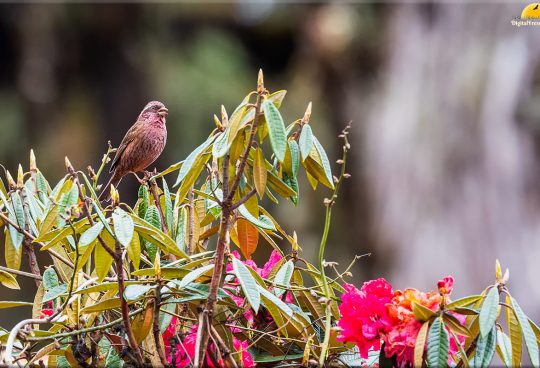The ferruginous pygmy owl (Glaucidium brasilianum) is a small owl that breeds in south-central Arizona and southern Texas in the United States, south through Mexico and Central America, to South America into Bolivia, Paraguay and Argentina. In Central America and South America, it is the most widely distributed pygmy owl and is probably one of the most numerous owl species in those areas. It is found in a wide range of semi-open wooded habitats in these areas. The Ferruginous Pygmy-Owl is one of the most widespread birds of the lowlands of the Neotropics; the distribution of the species extends from the southern United States south to central Argentina. This species occurs in a wide variety of habitats. It does not occur in closed-canopy forest, although it is found at forest edge, but otherwise is found in almost any wooded habitat including arid scrub, dry forest, evergreen forests, coffee plantations, and towns. Most Ferruginous Pygmy-Owls are generally rufous (“ferruginous”) in color, especially east of the Andes, but the plumage also may be a duller brown or gray-brown. This species shares the common pygmy-owl plumage pattern, with two large black marks (“false eyes”) on the back of the neck, and white underparts with coarse streaks. It can be difficult to distinguish from other species of Glaucidium strictly by sight; the adult of the Ferruginous has short white streaks on the crown, however, but most of other species have spotted crowns. The song, a long series of short whistles, is a familiar sound; pygmy-owls often respond aggressively to imitations of this song, approaching the source in a rapid, direct flight. Ferruginous Pygmy-Owls sometimes are active by day, although they primarily are crepuscular. They prey on large insects and small vertebrates, including small birds that may be almost as large as the owl.
Until 1997, according to Proudfoot and Beasom, no comprehensive study had been performed to analyze the diet of Ferruginous Pygmy-Owls. They observed owls in Texas, analyzed prey remains, and took video footage from inside nest boxes in order to confirm or clarify anecdotal accounts of Ferruginous feeding habits. Their results indicate that Ferruginous Pygmy-Owls, at least in Texas, are generalist predators and do not depend on any particular species to fill their diet. Analysis of prey remains indicate that their diet consists mainly of mammals (8.6%), other birds (10.5%), reptiles (22.5%), and insects (58%). They also observed instances of predation on the hispid cotton rat (Sigmodon hispidus) and Eastern Meadowlark (Sturnella magna), confirming anecdotal accounts of the birds taking prey items larger than themselves. Still, For example, in Brazil Schubart et al. (1965) reported a variety of insects in the diet (orthopterans, beetles, termites of the genus Nasutitermes, odonates, Hymenoptera: Formicidae, and cicadas) as well as a rodent and small reptiles (several lizards, including a geckonid, Gymnodactyulus; and a snake). Among insects, the most common prey items are grasshoppers and crickets in the US, and also some scorpions in Mexico. Peak feeding occurs during the dawn and dusk. During the nesting season, owls forage mainly between 6:00 and 9:00, and between 20:00 and 22:00. Ears are symmetrical, which suggests that vision plays a more important role in the location and capture of prey items. Ferruginous Pygmy-Owls perch at low heights and use short, swooping dives to catch prey once it has been found. Although adults capture prey in their talons, juveniles sometimes attempt to use their beaks. Killing prey usually consists of biting behind the neck to sever the spinal cord. Before consumption, many mammalian, avian, and insect species are decapitated. Avian species are also sometimes plucked, and their wings and tails are usually removed. Insects are often dissected to expose their softer parts; exoskeletons and other hard body parts are discarded. Smaller prey items (mostly insects) are consumed immediately upon capture, while larger prey may be cached for later consumption. It is classified as least concern by IUCN.
![]()






Sorry, the comment form is closed at this time.